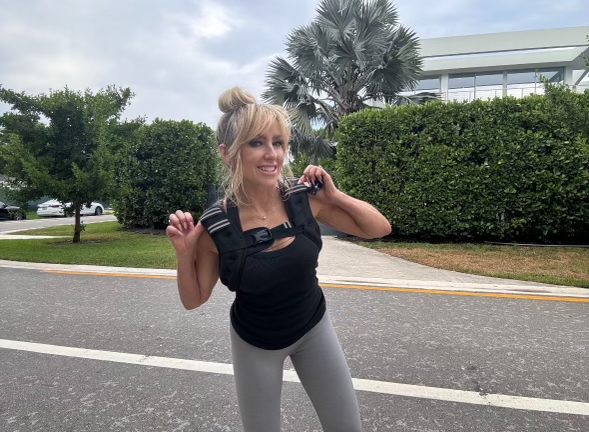When it comes to enhancing your workout and reaping health benefits like improved bone density and fall prevention, a weighted vest can be a game-changer. However, not all weighted vests are created equal, and there are several factors to consider before making a purchase. Let’s dive into what you need to know to make an informed decision.
Benefits of a Weighted Vest
Bone Density Improvement: One of the significant advantages of using a weighted vest is its potential to improve bone density. As we age, maintaining bone health becomes crucial to prevent osteoporosis and fractures. Wearing a weighted vest during activities like walking or resistance training can help stimulate bone growth. According to research, weighted vests can significantly improve bone mineral density in postmenopausal women.
Fall Prevention: Another critical benefit is fall prevention. For older adults, incorporating a weighted vest into their exercise routine can enhance balance and stability, reducing the risk of falls. Studies have shown that weighted vests can help improve fall risk parameters, making them a valuable tool for community-dwelling older adults.
Choosing the Right Weighted Vest
When selecting a weighted vest, comfort and adjustability are paramount. Here are some factors to consider:
- Fit and Comfort: The vest should fit snugly but comfortably. Look for vests with adjustable straps to ensure a secure fit. Comfort is crucial because if the vest is uncomfortable, you’re less likely to use it consistently.
- Weight Options: Some vests come with fixed weights, while others allow you to add or remove weights. Adjustable weight vests are more versatile as you can start with a lower weight and gradually increase it as your strength improves.
- Material and Durability: Ensure the vest is made from high-quality, breathable materials. This not only enhances comfort but also ensures the vest lasts longer.

How to Use It Safely
Using a weighted vest can provide excellent benefits, but it’s essential to use it correctly to avoid injury:
- Start Light: If you’re new to weighted vests, begin with a lighter weight and gradually increase it. This helps your body adjust and prevents strain or injury.
- Proper Form: Ensure you maintain proper form during exercises. Poor form can lead to injuries, especially when additional weight is involved.
- Listen to Your Body: Pay attention to how your body responds. If you experience pain or discomfort, reduce the weight or take a break.
My Experience
Incorporating a weighted vest into my workouts has been a transformative experience. I’ve noticed improvements in my strength and stability, and it has added a new dimension to my fitness routine. It’s a simple yet effective tool that can make a significant difference, especially as we age.
Conclusion
A weighted vest can be a valuable addition to your fitness arsenal, offering benefits like improved bone density and reduced fall risk. However, choosing the right vest and using it correctly are crucial for maximizing its benefits. For those interested, I recommend checking out my favorite weighted vest.
Research:
- Weighted Vest and Bone Density
- Community Dwelling Older Adults
- Bone Mineral Density In Postmenopausal Women
- Improved Fall Risk
- Hip Bone Loss Prevention
Weighted vests offer a simple yet powerful way to enhance your fitness routine and support your health. Whether you’re looking to boost your bone density or improve your overall stability, this tool can provide substantial benefits.



One response to “What You Need to Know Before Buying a Weighted Vest”
I just started following you yesterday and I SUBSCRIBED , least I can do for you and THANK you for the very helpful and informative content , I watched all day today …..you are a beautiful person , inside and out .
thanks for the great suggestions , I will sure try a weighted vest , I did not see the link for the one you are wearing , can you send the link to me please .
I also wonder if you have a full list of all the supplements you recommend and the links of course if there are discount codes, that would help .
I love BIOPTIMIZER company and hope to get a code, since it adds up a lot .
ALso would like to add PROTEIN Powder and CREATINE and whatever else gets me back on track .
I appreciate all you do for women ,
most Kindly ,
hildegard Utecht